Nunnamujip (눈나무집)
10.9Km 2020-06-16
136-1, Samcheong-ro, Jongno-gu, Seoul
+82-2-739-6742
Nunnamujip is famous for a North Korean dish called, “Kimchi mari guksu”, which is a noodle dish in cold kimchi soup containing toasted laver, a boiled egg, and sesame. The soup is refreshingly cold and a little spicy. For “Kimchi mari bap”, a bowl of rice is put into cold kimchi soup instead of noodles. The taste is very unique. In addition to Kimchimari, “Tteokgalbi” is a popular dish on the menu as well.
The main restaurant is located in the basement, which has only limited seating capacity with a few tables. As a result, many people usually wait in line for lunch or dinner. A second franchise has opened in a three-story building across the street. To enjoy a quaint atmosphere, the first establishment is better, but the new one’s interior design is much more modern and fancier, giving it a fresh altering look.
Hojil (호질)
10.9Km 2021-03-20
15, Jahamun-ro, 9-gil, Jongno-gu, Seoul
+82-2-764-6822
A good restaurant to visit before and after the tour, being located near Gyeongbokgung Palace, one of the tourist attractions. This restaurant's signature menu is spicy sea snail salad. This Korean dishes restaurant is located in Jongno-gu, Seoul.
Darakjeong (다락정)
10.9Km 2021-03-26
131-1, Samcheong-ro, Jongno-gu, Seoul
+82-2-725-1697
Darakjeong has been popular for a long time because of the simple taste of its traditional Mandu (Korean stuffed dumpling). Since its opening in 1991, tasty soup and scrumptious Mandu have been served. A fist-sized Mandu is fully packed with seasoned meat, bean-curd, and various vegetables. Its thick dough makes it chewy and delightful. For one person, “Manduguk”(boiled dumpling soup) is a good choice. The delicious and nourishing taste of Mandu goes well with the sweet, spicy, and fresh taste of the soup. Manduguk is served in a brass bowl which keeps the food warm while eating. For a large-size group, “Mandujeongol” cooked with various vegetables in a casserole is recommended. There are two types of Mandujeongol that have different tastes. The main characteristic of “Kimchi Mandujeongol” is its spicy flavor, which reminds people of the refreshing taste of Kimchi soup, and “Tojang Mandujeongol” expounds on the savory taste of bean-paste soup. Tojang means folk soybean-paste. “Nokdujeon”(a Korean pan-fried dish with green mung bean) is another famous dish at Darakjeong, which is pan-fried with a very light seasoning to emphasize the original taste of Nokdu (green mung bean). Salted oysters with hot pepper are served with Nokdujeon instead of soy sauce, which is a perfect match.
Suyeonsanbang (수연산방)
11.0Km 2024-07-19
8, Seongbuk-ro 26-gil, Seongbuk-gu, Seoul
Suyeonsanbang, a traditional Korean tea house located in Seongbuk-dong, was originally the house where the late Korean author Lee Tae-Jun wrote many of his books. Now, his estate has opened Suyeonsanbang’s doors to the public in the form of a charming and peaceful tea house. Famous for its savory tea, beautiful nature, and rich history, Suyeonsanbang has been covered by a variety of foreign media outlets like NHK (Japan), BBC (UK), French TV channels, and numerous Japanese magazines. To take a break during the summer heat, visitors come to Suyeonsanbang to try their patbingsu (shaved ice with red beans), one of its summer specialties. So come relax and be inspired in this traditional Hanok tea house.
Of one book and stay / 일독일박
11.0Km 2025-08-11
11-1, Pirundae-ro 3-gil, Jongno-gu, Seoul
This hanok (traditional Korean house) is located in Seochon Village near Gyeongbokgung Palace. It is a modern C-shaped hanok centered around the inner courtyard, which is the first thing that the guests see after entering through the gate. While it is not expansive, white pebbles and a foot bath make this hanok a unique one. One can enjoy a foot bath while sitting on the porch.
The bedroom, which is located beyond the living room, is furnished with a queen-sized bed. Opening the screen doors brings one to the view of the kitchen area beyond the inner courtyard. A large table, plush sofa, and a small bookcase make the space ideal for books and discussions. Climbing the wooden ladder to the side of the kitchen brings one to the attic, which also doubles as a Korean-style room with a skylight. The kitchen is furnished with a refrigerator, microwave oven, gas stove, electric kettle, toaster, pots, utensils, wine glasses, and bottled water. There is a restroom with a bathtub. The standard occupancy of the house is 4 people.
Cheong Wa Dae (Casa Azul) (청와대)
11.0Km 2024-05-17
Cheongwadae-ro 1, Jongno-gu, Seúl
Cheong Wa Dae (también conocida como Casa Azul) se compone del Edificio de la Oficina Principal, Yeongbingwan (Residencia de los Huéspedes de Estado), Chunchugwan (Pabellón de Primavera y Otoño), el parque Nokjiwon, Mugunghwa Dongsan y el santuario Chilgung. Las formas singularmente únicas de los edificios guardan un gran interés. Su estética sigue el estilo tradicional coreano. Las tejas azules y las suaves líneas curvas del techo del edificio principal son bellísimas. Aproximadamente 150.000 tejas componen el techo de Cheong Wa Dae, cada una de las cuales fueron cocidas al horno, en forma individual, de modo que son suficientemente fuertes como para ser usadas por más de un siglo. Mirando hacia la derecha encontrará Chunchugwan. El techo de Chunchugwan fue hecho de las tradicionales tejas de barro cocido y aquí es donde el presidente de la nación llevaba adelante sus conferencias de prensa. A la izquierda de la Oficina Principal, se halla Yeongbingwan. Esta construcción fue diseñada para alojar grandes conferencias y eventos oficiales durante las visitas de los invitados extranjeros. Luce muy lujosa y magnificente con sus 18 columnas de piedra que sustentan al edificio. Asimismo, puede pasear por el jardín Nokjiwon y el valle Mugunghwa. Nokjiwon es donde una sucesión de presidentes plantaron árboles en ocasiones memorables. Allí, hay un famoso árbol que tiene 310 años de edad. El valle Mugunghwa se encuentra lleno de flores de la rosa de Sharon, una fuente y una estatua del ave fénix, que conforman el lugar perfecto para la toma de fotografías. El lugar presenta un paisaje aún más bello entre julio y octubre, cuando las flores mugunghwa, la flor nacional, rompen sus pimpollos y cubren el jardín con su aroma. Todos los obsequios entregados al presidente se encuentran dispuestos aquí en exposición. Desde mayo de 2022, el predio de Cheong Wa Dae se encuentra abierto al público.
Dar un paseo por los alrededores de Cheong Wa Dae es un gran placer, por los paisajes atractivos y peculiares. Estos caminos de paseo se despliegan por un lado del palacio Gyeongbokgung pasando por Cheong Wa Dae y llegando al Parque de Samcheong-dong. El trayecto desde la puerta Dongmun del palacio Gyeongbokgung hasta Cheong Wa Dae es el recorrido más bello. Junto a un camino que se despliega por el centro, se encuentra el Muro de Piedra del Palacio Gyeongbokgung hacia la izquierda, las galerías de arte, y los edificios antiguos hacia la derecha. Junto al Muro de Piedra del Palacio Gyeongbokgung crecen árboles añejos que relajan y reconfortan a los que pasean junto a él. Gracias a sus coloridas hojas, el sendero se convierte en un paseo muy romántico durante la época de otoño. Cruzando la calle se encuentran la Galería Hyundai y el Museo Kumho, entre otros lugares artísticos, y también hay una variedad de cafeterías elegantes.
Sarangchae de Cheong Wa Dae (청와대사랑채)
11.0Km 2025-04-18
Hyoja-ro 13-gil 45, Jongno-gu, Seúl
Sarangchae de Cheong Wa Dae es un espacio donde los visitantes pueden aprender sobre cultura coreana y la historia de los presidentes de Corea. Los visitantes pueden también conocer algunas anécdotas e historias relacionadas con Cheong Wa Dae y sentir el encanto de hacer turismo en Corea.
Templo Cheonggyesa en Gyeonggi-do (청계사(경기))
11.1Km 2021-11-29
Cheonggye-ro 475, Uiwang-si, Gyeonggi-do.
A poca distancia del lago Baegun, existía un templo famoso por la flor mítica del budismo, la “udumbara”. Siendo una especie rara de flor, suelen presentarse en las áreas de la estatua de Buda, pero resulta, que esta flor había aparecido en el templo Cheonggyesa del monte Cheonggyesan. El templo fue fundado durante el período de Silla y fue restaurado al 10º año de reinado de Chungnyeol (1284), y posee una gran cantidad de patrimonios y reliquias históricas pertenecientes al budismo. Entre los valiosos tesoros que posee el templo, lo más destacable es la campana de cobre y la plancha de madera. La campana de cobre fue construída a los 27 años de reinado de Sukjong (1701), con representaciones de dos enormes dragones, la imagen del Buda que sostiene una flor de loto, entre otras figuras tradicionales del budismo. La plancha de madera fue designada Patrimonio Cultural de Gyeonggi-do, y hoy en día se conservan 466 planchas de 18 tomos. Además de las mencionadas, también sostiene textos budistas, y otros valiosos registros de la antigüedad.
Calle Frontal de Cheong Wa Dae (청와대 앞길)
11.1Km 2022-06-30
Gungjeong-dong, Jongno-gu, Seúl
La calle frontal de Cheong Wa Dae (también conocida como Casa Azul) está abierta al público e incluye el Hyoja Samgeori (intersección de tres calles) en Hyoja-dong y el Palpan Samgeori (intersección de tres calles) en Palpan-dong. Cuando se camina por la calle Hyoja-ro, desde la Estación de Gyeongbokgung del metro, se pueden ver una fuente, el jardín Mugunghwa, y los pabellones Daegogak y Yongbingwan. Al principio de la calle, enfrente de Cheong Wa Dae, árboles y hermosos jardines de flores decoran los dos lados de la misma, creando un agradable lugar para pasear.
Ca'del Lupo (까델루뽀)
11.1Km 2020-04-27
5-5, Jahamun-ro 16-gil, Jongno-gu, Seoul
+82-2-734-5233
Ca'del Lupo is an Italian restaurant, closely located to Paris Baguette in Hyoja-dong, Jongno-gu near Gyeongbokgung Palace Station. Though the restaurnat masters delicious homemade Italian cuisine on the inside, the exterior is wholly Korean. This unique combination of Hanok (traditional Korean house) style housing and Western foods is drawing a lot of people to Hyoja-dong. The great mix of both cultures can be seen in the sophisticated decorations and from the amazing food. The herbs they use are picked directly from the restaurant's personal garden. But to enjoy the atmosphere here, you will have to make a reservation far in advance.
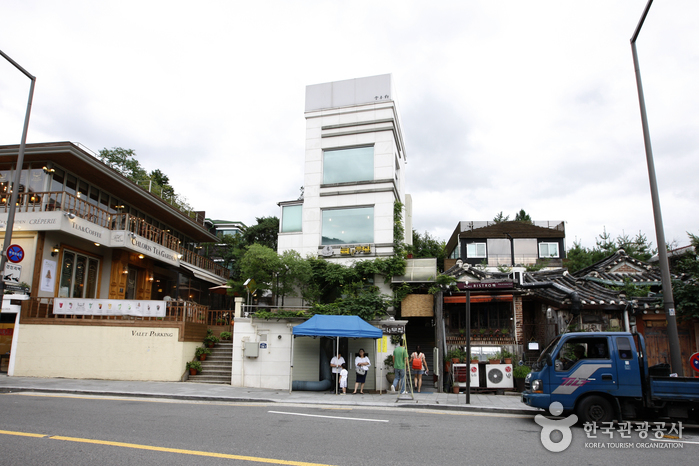
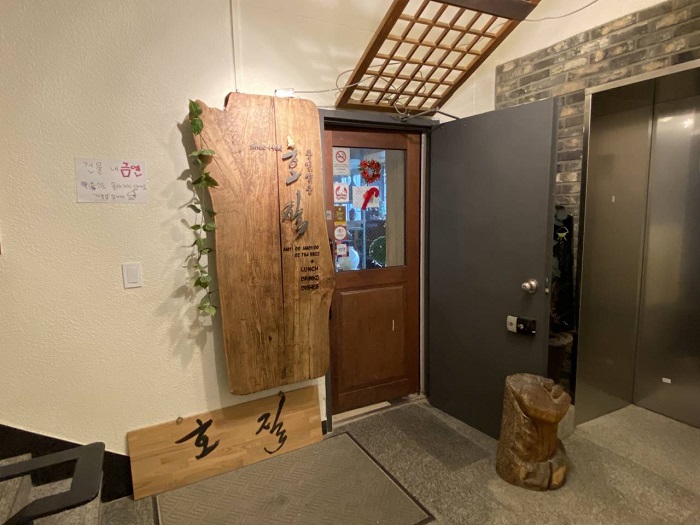
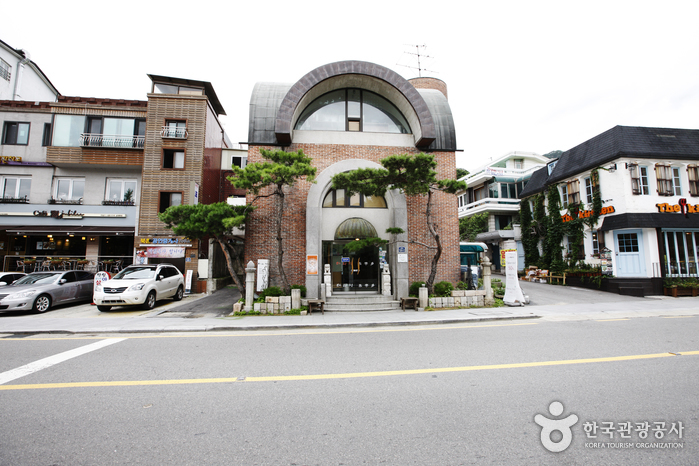

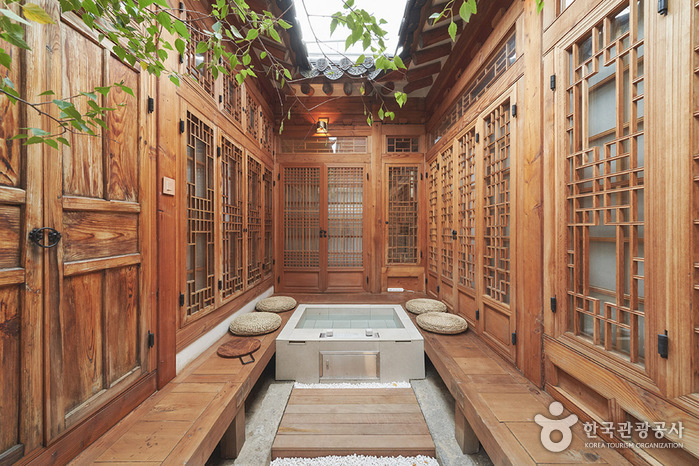
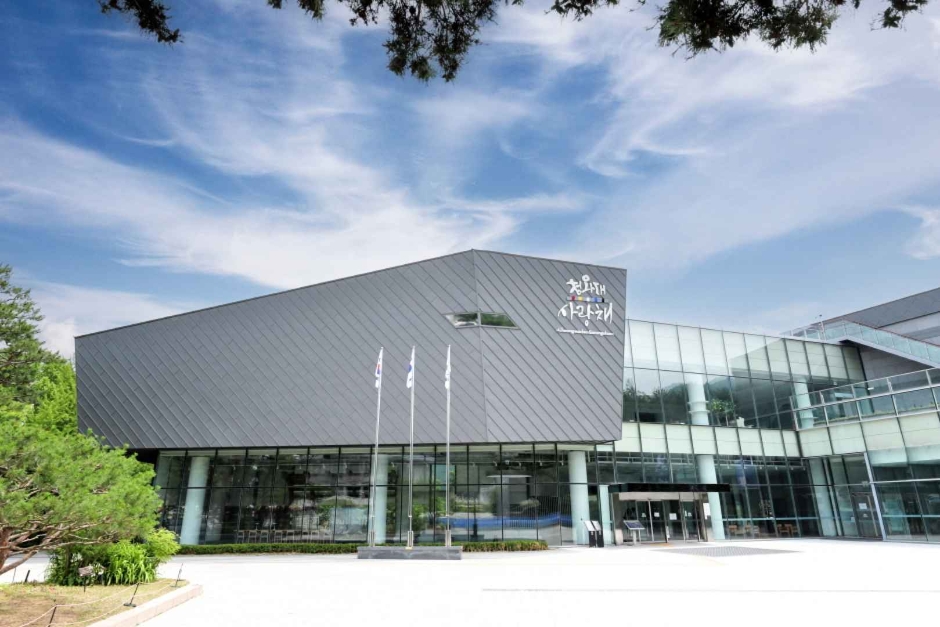
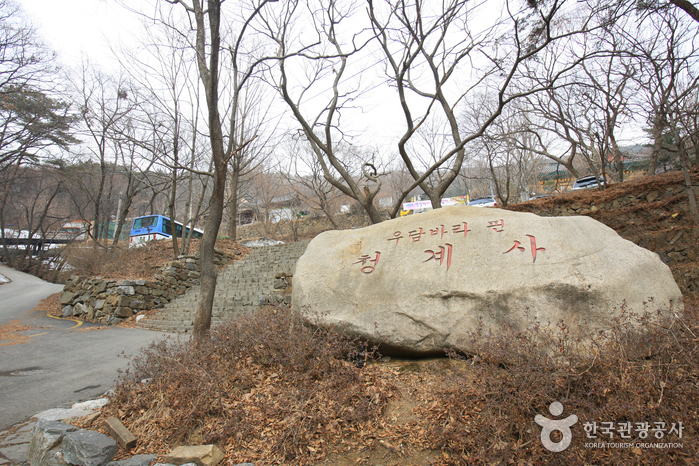
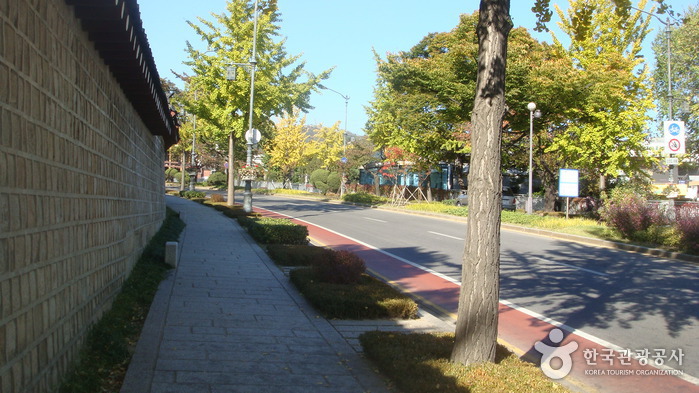
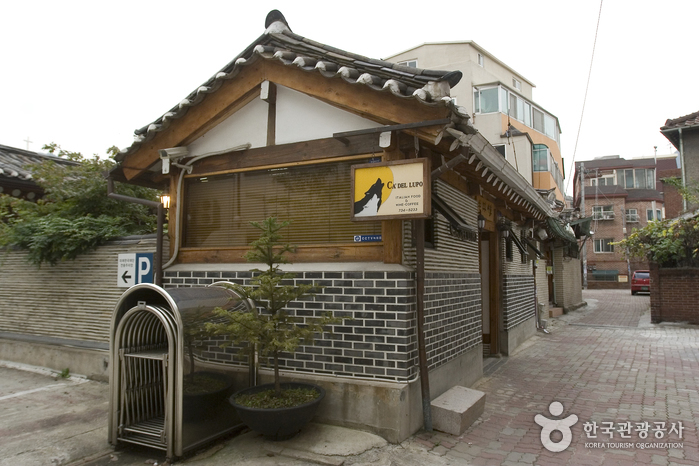
 Español
Español
 한국어
한국어 English
English 日本語
日本語 中文(简体)
中文(简体) Deutsch
Deutsch Français
Français Русский
Русский